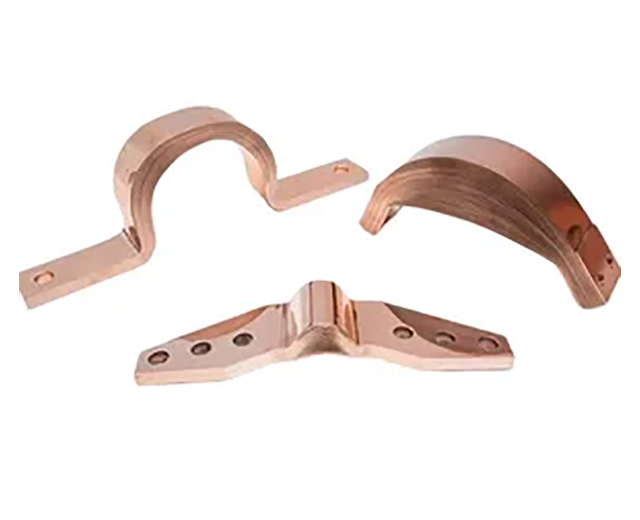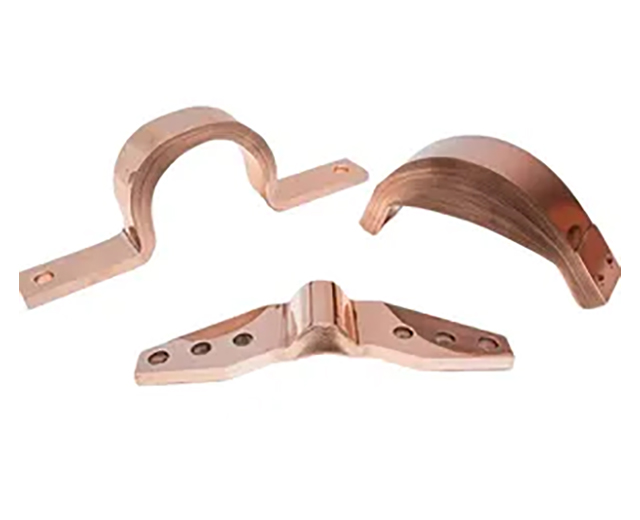

A Flexible Laminated Copper Busbar is a high-performance copper conductor designed with a layered structure for flexibility and high conductivity. It allows easy bending and installation in space-constrained industrial applications while maintaining low resistance and reliable current-carrying capacity. Variants include Flexible Laminated Copper Busbar, High Current Flexible Laminated Busbar, and Custom Flexible Laminated Copper Busbar.

Material Selection: High-purity copper sheets are chosen for excellent conductivity.
Layering & Lamination: Copper sheets are laminated with insulating layers to create flexibility while ensuring electrical safety.
Insulation (Optional): PVC Insulated Flexible Busbar can be applied for enhanced protection.
Shaping: Laminated busbars can be cut or formed to meet installation requirements.
Testing & Customization: Each busbar is tested for current-carrying capacity, insulation integrity, and mechanical strength. Custom Flexible Laminated Copper Busbar solutions are available for specific lengths, thicknesses, or configurations.
These busbars are widely used in:
Switchgear – providing flexible, safe connections for industrial and commercial switchboards.
Industrial Distribution Panels – ensuring efficient power distribution with minimal energy loss.
Control Panels – supporting sensitive equipment with reliable current flow.
Industrial Control Systems – designed for high current copper busbar applications where space is limited.
Optional PVC Insulated Flexible Busbar designs provide additional safety in exposed or confined environments.
| Parameter | Specification |
|---|---|
| Material | High-purity copper |
| Conductivity | ≥ 99% IACS |
| Structure | Laminated flexible layers |
| Insulation | Optional PVC coating |
| Thickness | Customizable (e.g., 0.2mm–0.8mm per layer) |
| Width | Customizable |
| Current Rating | High current capacity (depends on dimensions) |
| Temperature Range | -40°C to +105°C |
| Surface Treatment | Bare or tin/nickel plated |
| Compliance | Industrial electrical standards |
High Conductivity & Low Resistance – ensures efficient power transmission.
Flexibility – easy to bend and install in tight spaces without compromising performance.
Corrosion-Resistant – protects against oxidation and environmental factors.
Customizable – Custom Flexible Laminated Copper Busbar available in various shapes, lengths, and thicknesses.
High Current Capacity – supports demanding industrial applications efficiently.
Space-Saving Design – layered structure reduces installation footprint, suitable for industrial copper busbar systems.
Determine current load and electrical system requirements.
Choose the number of copper layers and insulation type.
Decide on the length, thickness, and overall busbar dimensions.
Verify flexibility, mechanical strength, and installation compatibility.
Consider optional PVC insulation for added safety in exposed installations.
High-quality Flexible Laminated Copper Busbar and High Current Flexible Laminated Busbar with strict quality control.
Custom Flexible Laminated Copper Busbar options tailored to project specifications.
Available PVC Insulated Flexible Busbar for additional protection.
Reliable, space-saving, and durable solutions for industrial copper busbar applications.
Q1: What is a flexible laminated copper busbar?
A: It is a high conductivity copper busbar made with multiple laminated layers, offering flexibility and low resistance for industrial power applications.
Q2: Can these busbars be customized?
A: Yes, Custom Flexible Laminated Copper Busbar solutions are available in different lengths, thicknesses, and insulation options.
Q3: Are PVC-insulated versions available?
A: Yes, PVC Insulated Flexible Busbar options provide extra protection for exposed or confined installations.
Q4: Can they handle high current applications?
A: Absolutely, High Current Flexible Laminated Busbar variants are designed to carry heavy loads efficiently in industrial copper busbar systems.
Q5: Why choose laminated busbars over solid copper bars?
A: Laminated design provides flexibility, reduces mechanical stress during installation, and allows for space-saving layouts in complex electrical panels.